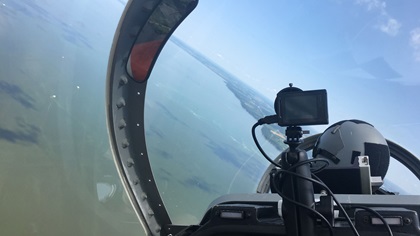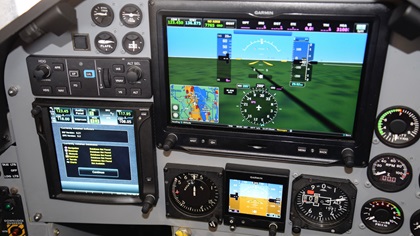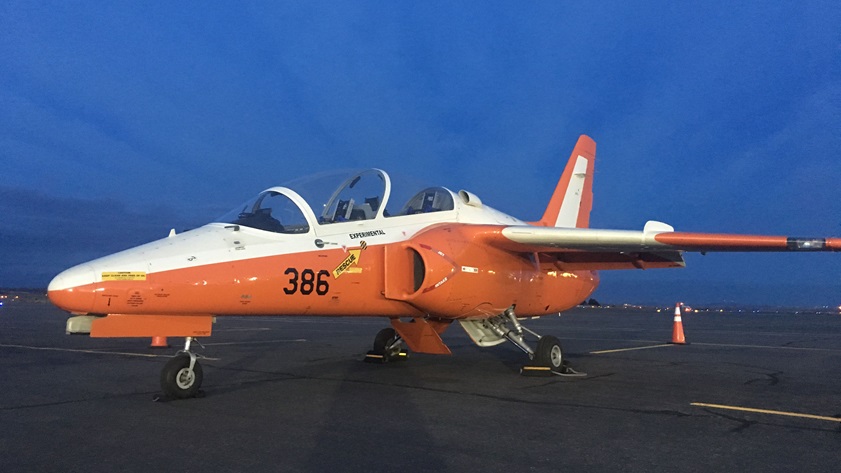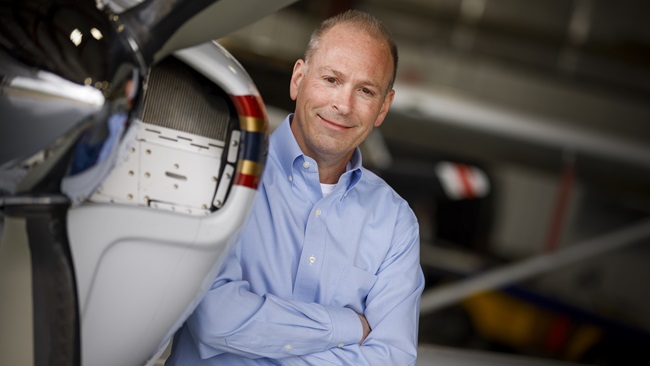Train like a fighter pilot
The FAA recently gave a pair of retired U.S. Marine Corps F/A–18 pilots permission to offer advanced training to certificated pilots in Italian-made jet trainers, with a syllabus crafted to wrap horsepower and thrills around a solid grounding in safety and risk management.
Chris Koelzer and Tom Paquin both flew combat missions in carrier-based F/A–18 Hornets, and met while serving in a Texas-based reserve unit about 10 years ago. Koelzer said, in a telephone interview, that the pair’s shared goal is to impart the disciplined approach to aviation they learned in the military to civilian pilots. Paquin, after a successful venture into post-military business life in the biofuels industry, acquired a vintage North American T–6 Texan (an SNJ version built for the U.S. Navy) and began offering advanced training. Now, Victory Aviation Company LLC has stepped up the horsepower, acquiring a pair of SIAI-Marchetti S.211 jets and securing FAA approval (a letter of deviation authority, or LODA) that allows them to offer flight training in these rare Italian birds, ranging from basic familiarization to formation flying, upset recovery, and military-style, scenario-based training.
“We want to offer jet flying and just kind of help people take their flying to the next level,” Koelzer said. “All of the philosophical and attitude things you need to be a safe (aviator).”

Based in Denton, Texas, but willing to travel (the S.211 has a range of about 600 nautical miles), Koelzer has begun talking with corporate flight departments and networking at National Business Aviation Association events to drum up interest in using the jets that served as trainers for the air forces of Singapore and the Philippines as advanced trainers for pilots of Cessna Citations and similar models.
“I think we can put together a training program to match any pilot experience level,” Koelzer said. And while jet time tends to be pricey, the pair are offering an introductory rate in 2018 of $2,250 per hour, a $250 discount that will also be offered for block-time purchases in 2019 and beyond. Koelzer said that for those interested in learning the fine points of formation flying, the second jet will also likely be offered at a favorable rate.
“I will say that Tom as the owner of this whole lash-up… he would love to just go out there and fly,” Koelzer said, noting that Paquin has already logged about 120 hours in the S.211 in the past year.

A standard 60-minute training sortie is time enough for basic familiarization (including a hefty helping of ground school for piston pilots not used to turbine aircraft), including stalls, aerobatic maneuvers, and a few unusual attitudes, and no small amount of fun. Koelzer said the S.211, despite sporting a lot less horsepower than the F/A–18, has hydraulically boosted ailerons and highly responsive handling characteristics to go with a 4,200 fpm climb rate.
“It’s way more forgiving to fly, and easy to fly, than a Hornet,” Koelzer said, noting that one customer, a Van’s RV–6 owner, managed to land the S.211 on the first try.
For those with ambition to buy one of the 13 other S.211s currently in the United States, or those who want to earn the authorization to fly this experimental turbine aircraft on their own, the basic prerequisites for the experimental aircraft authorization for their pilot certificate include 1,000 hours of total time and 500 hours of pilot-in-command time, along with the high-altitude and complex aircraft endorsements. Koelzer said that a pilot with those basic qualifications but no previous turbine experience could be expected to complete the qualification within about 10 hours, more or less.
“It might be a $20,000 proposition,” Koelzer said.
Given the relative rarity of the S.211, Koelzer expects that upset recovery training will be their most popular option. One customer, he noted, owns an L–39 Albatros, and pronounced the S.211 a good-looking alternative with a fit and finish that’s less utilitarian. One of the two Victory Aviation S.211s has been retrofitted with a Garmin panel, by the way.





